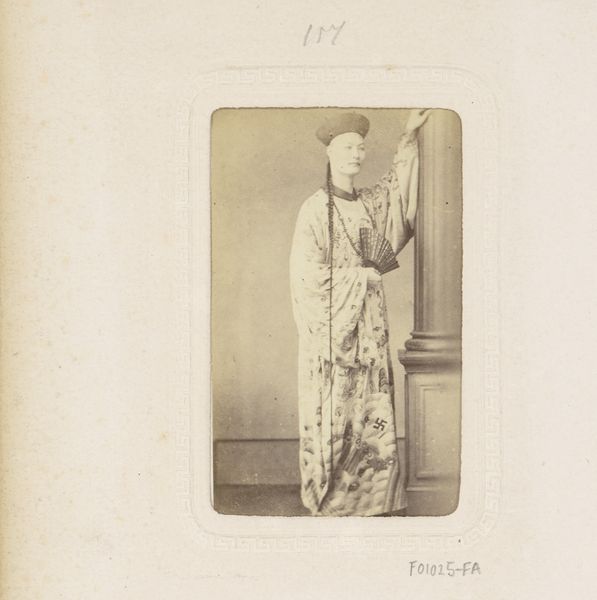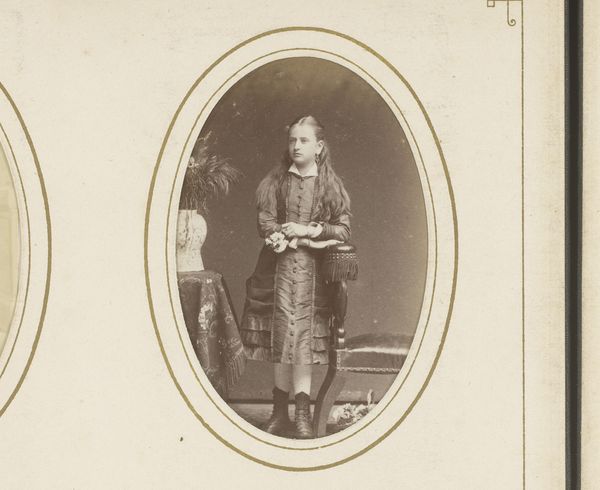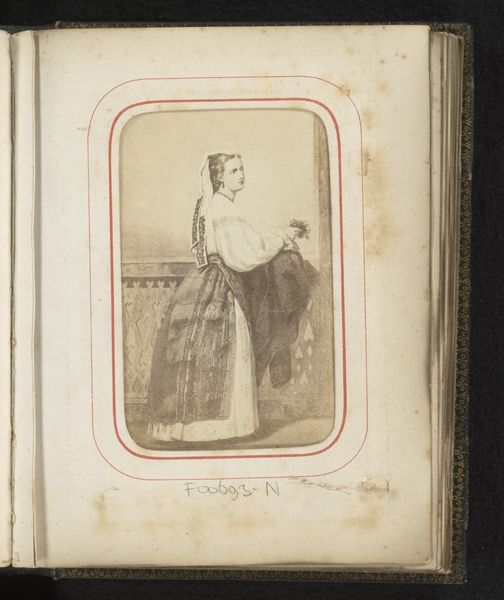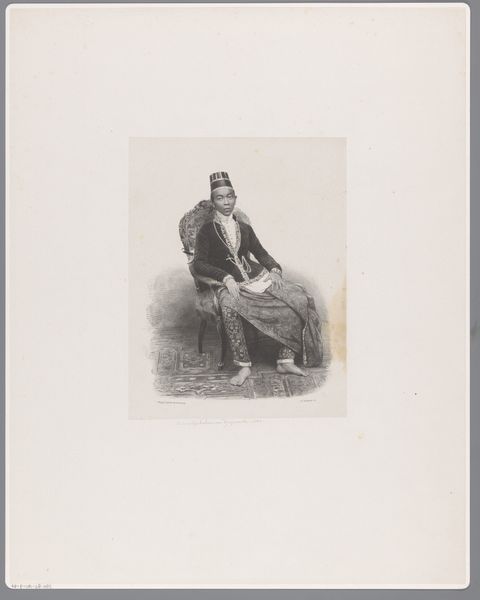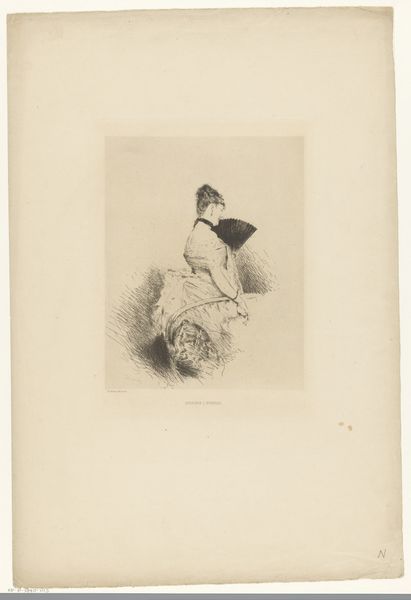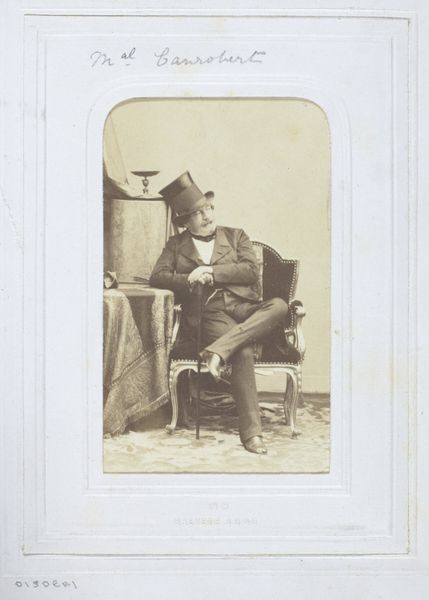
photography
#
portrait
#
asian-art
#
photography
Dimensions: height 85 mm, height 52 mm
Copyright: Rijks Museum: Open Domain
Editor: Here we have a photographic portrait from sometime between 1850 and 1880, titled *Portret van een zittende Chinese vrouw*, which translates to "Portrait of a seated Chinese woman." It’s attributed to Maujean & Dubois et Cie. The woman's gaze is so direct, so unwavering. What do you see when you look at this portrait? Curator: I see a complex layering of gazes and power dynamics inherent in the colonial project. Photography, during this period, was often used as a tool to document, categorize, and ultimately control colonized populations. This woman's direct gaze, as you pointed out, becomes an act of resistance, a reclamation of agency within a context designed to strip her of it. How do you think her clothing contributes to our understanding? Editor: Well, her attire seems quite elaborate. Could that speak to her social standing? Curator: Exactly! And it invites questions about the image’s circulation and consumption. Who was this photograph *for*? Was it intended for a European audience, exoticizing and objectifying her? Or was there a local market for these kinds of images? Thinking about that impacts how we interpret her agency, don’t you think? Editor: It definitely shifts the perspective. The intent behind the photograph seems to matter a lot here, complicating our view of her “agency." I hadn't considered how much the photograph's intended audience could change things. Curator: These images operate as cultural documents reflecting the social, economic, and political relationships between Europe and China. We must investigate the historical forces at play and contextualize these images within those systems of power. It requires that we analyze through the lenses of postcolonial theory and critical race studies to really start uncovering the dynamics present. Editor: I see. This has given me so much to consider about how we view historical portraits, especially those from a colonial context. Curator: Me too. Thinking about this image today reinforces the need to interrogate power structures embedded within representation.
Comments
No comments
Be the first to comment and join the conversation on the ultimate creative platform.

